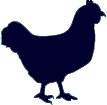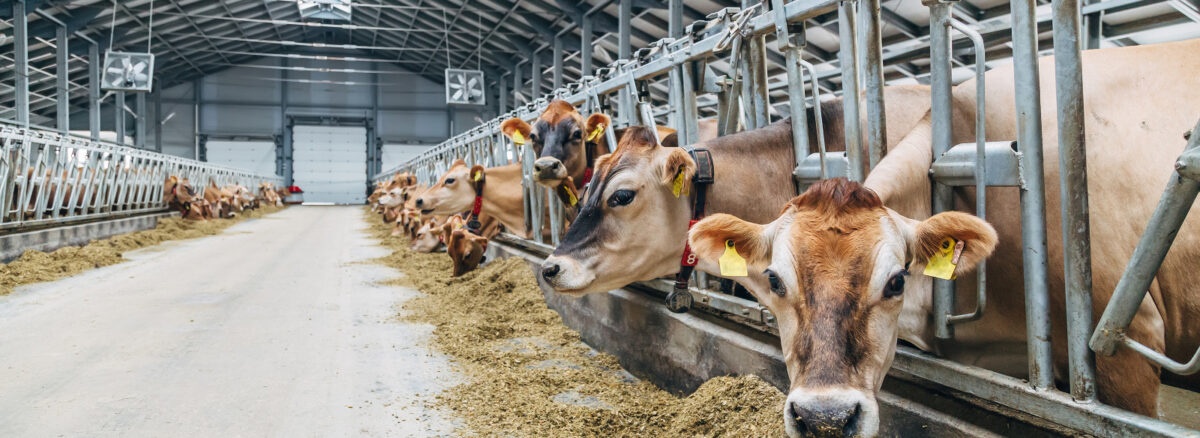Moving In! The New Cow Arrival Guide
When a new cow arrives at your sanctuary, there are several critical steps that must be taken to ensure safety for the incoming resident, the existing residents, and yourself!
Identify The Specific Needs Of Incoming Individuals
While cows, in general, have certain diet, housing, and care needs, you must also consider if the new arrivals require any special accommodations based on their age, breed, health status, known history, or the circumstances of their recent living situation. Each new resident and situation will be different, but some things to consider include:
- If you’re taking in calves, you will have to learn how to properly care for them in terms of heat, food, and shelter, if you take in a pregnant cow, you will need to learn how to offer appropriate prenatal care.
- If you welcome a mother cow along with her nursing calf, you should not separate the two of them unless necessary for their health. If you separate them, allow them to be close enough to touch if they choose to!
- If you are taking in a female cow from a dairy production setting, you must work closely with your veterinarian to make sure you are not encouraging further milk production while ensuring she does not develop mastitis.
- If the new cow is from a starvation situation, you must work closely with your veterinarian to determine what to feed them. Offering unrestricted food sources to an individual who has been starved can result in serious health complications.
- If the new resident is a mature bull (unneutered male), you should take time to closely observe his behavior before entering his living space, and make sure staff who will work with him know what physical cues to be on the lookout for that may indicate he is frightened or feeling confrontational. Not all bulls are confrontational, but they do have the potential to behave quite differently than a neutered male and can cause serious injury if they slam or kick someone, so it’s important to thoroughly assess their response to human presence and interactions.
- Similarly, if the new cow is fearful or confrontational, be sure to keep human safety in mind when working with the cow. Being in a confined space with a fearful or confrontational cow has the potential to be quite dangerous. You may need to utilize a chute system to safely evaluate the cow. Make sure anyone working with the cow is trained in safe practices and is well-versed in cow body language and behavior.
- If the new cow is very agile and appears to be fearful, or if the new resident is assumed to have escaped from their previous living situation, be sure to assess if your quarantine space can safely contain them. A frightened cow may try to jump a fence, and you might be surprised just how high a cow can jump if they feel they need to. Not only do you want to avoid the new resident getting loose, they could also seriously injure themselves while trying to escape. Any time you take in fearful individuals, it is important to find gentle ways to help them become more comfortable around their caregivers. They may never become cows who crave human attention (though some individuals who arrive very fearful certainly do!), but you should be able to ease their fears and hence increase their comfort, even if they choose to keep their distance from humans.
- Hoof Issues– Because sanctuaries often take in individuals who may have had their needs neglected, very often new cows arrive with overgrown hooves. Be sure to evaluate their feet and check for any signs of hoof rot, hoof abscesses, or other abnormalities. Schedule a visit from your farrier or veterinarian to trim their feet and address any issues. Some types of bacterial hoof rot are highly contagious and must be aggressively treated. Be sure to work with your veterinarian to diagnose any issues and establish a treatment plan.
- Mobility or Joint Issues– You should assess the cow’s mobility by watching them walk and looking for any abnormalities in their gait or shifting of weight when standing. When checking their legs, pay extra attention to their joints, looking for any swelling and listening for crepitus (popping or crunching). If safe to do so, you can feel the joint for heat as well. Mobility and joint issues should be evaluated by a veterinarian to determine the cause and appropriate treatment plan.
- Respiratory Issues– Watch closely, both during the intake examination and during the quarantine period, for any signs of respiratory illness such as nasal discharge, coughing, an elevated respiratory rate, fever, or breathing that sounds wet, raspy, or wheezy. Your veterinarian can evaluate the cow’s lungs, recommend diagnostic testing, and ultimately offer treatment options.
- Pinkeye– If the cow arrives with eye issues, especially during fly season, be sure to consider if it could be pinkeye, or infectious bovine keratoconjunctivitis (IBK), which is highly contagious. All eye issues should be evaluated by a veterinarian as soon as possible, as early treatment of many issues is important to prevent permanent eye damage. Because pinkeye is contagious and is often spread by flies, be sure to use proper fly mitigation strategies as well as following quarantine procedures to prevent spread to other residents. Some cows may arrive with scarred eyes from old pinkeye infections.
- External Parasites– Checking for external parasites should be a part of all resident health examinations, but it is especially important for incoming cows. Lice infestations are especially common in cows, and new cows can easily spread these parasites to other residents.
- Assess spay/ neuter/ pregnancy status: New males should be evaluated to determine their neuter status, though in some cases you may need a veterinarian to help with this if you are unsure. Intact males should be scheduled for castration as soon as your veterinarian deems appropriate. They will need time to recover after the surgery, which could delay their introduction to other residents if done towards the end of their quarantine period. Females who are sexually mature should be evaluated for pregnancy through an ultrasound and/ or BioPRYN blood testing. If laparoscopic ovariectomies are part of your cow care practices, work with your veterinarian to determine if they are healthy enough (and mature enough) to undergo the procedure. If an incoming resident is early on in their pregnancy, some sanctuaries choose to administer Lutalyse (or a similar product) to induce miscarriage. This decision ultimately depends on an individual sanctuary’s Philosophy of Care.
- Approximate their age by looking at their teeth: We are not talking about evaluating their dental health here- that definitely requires an experienced veterinarian. However, by observing how many adult teeth a cow has, you can estimate their age. For some individuals, it may not be safe to put yourself that close to their head, in which case you will need to skip this step for now. If you have never done this before, there are plenty of resources online that show how, but you should work with your veterinarian and have them show you how to to do so safely. While calves may be easy to restrain safely, it can be difficult to prevent a mature cow from swinging their head and being hit in the face by a large cow’s head can be quite dangerous. A veterinarian may also be better able to guess the age of a cow who has all their adult teeth by looking at how long or worn they are. Having a general idea of their age can be very helpful when considering their needs. When examining their teeth, never put your hand inside a cow’s mouth as they have extraordinarily strong jaws and could seriously injure a hand or finger.
- Consider placing a rumen magnet: If you haven’t already, talk to your veterinarian about using rumen magnets to help prevent hardware disease, and work with them to establish an appropriate protocol for your residents. Depending on your protocols and the age of the new cow, either have the magnet placed during the intake process or schedule placement for a later date.










